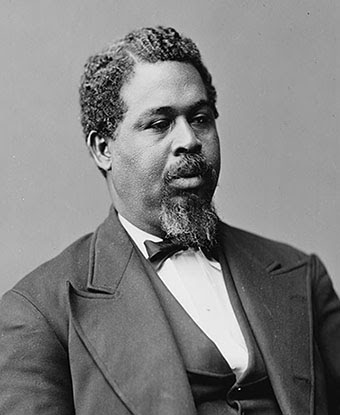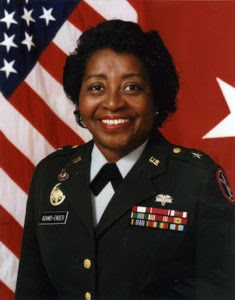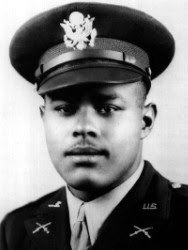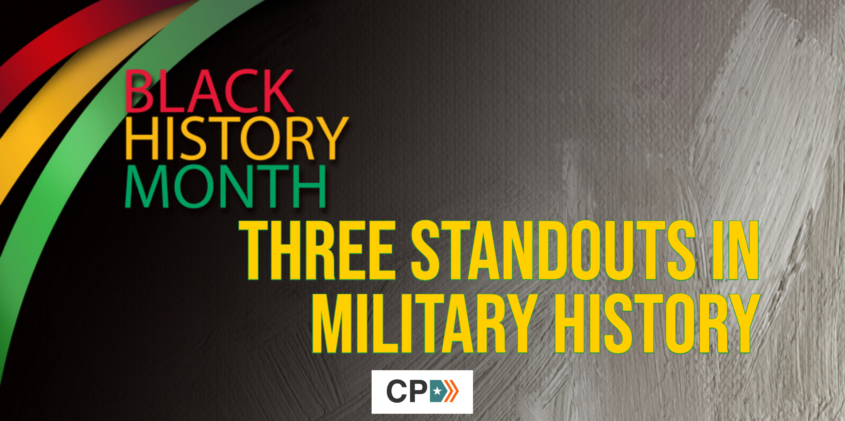Black History Month: Three Standouts in Military History
From the beginning of our history, Black men and women have made tremendous contributions to our society, particularly the U.S. military’s success. As we celebrate Black History Month, Code Platoon wanted to recognize standouts from that community who rose above and beyond the call of duty, making their contribution all the more significant, given that they succeeded despite the disparities of their situation. So, we have chosen three individuals who embody that spirit of rising to meet a challenge and overcoming their surroundings.
Robert Smalls
Born into slavery on a plantation in South Carolina, Smalls eventually married another enslaved person and, after having children, wanted to “buy” his family from the enslavers. Not having  enough money, Smalls joined the Confederate Navy and developed enough trust with his commanders that he was allowed to pilot a ship which he then craftily sailed away in – with eight other enslaved people – to freedom in the North.
enough money, Smalls joined the Confederate Navy and developed enough trust with his commanders that he was allowed to pilot a ship which he then craftily sailed away in – with eight other enslaved people – to freedom in the North.
Following the Civil War, the Department of the Navy gave him enough money to buy the home he belonged to before the war, where he then lived for the rest of his life. But he wasn’t done carving out a path, as he went on to serve in the South Carolina State Assembly and also the U.S. House of Representatives for five terms, helping shape the country for years to come.
To put it bluntly, he never quit fighting, which is the true mark of a hero.
Clara Leach Adams-Ender
Author of the book My Rise to the Stars: How a Sharecropper’s Daughter Became an Army General, Clara Adams-Ender had nine siblings, graduated high school at 16 years old, and joined the U.S. Army in 1961 to pay for her nursing school education. Commissioned as a Second Lieutenant, Adams-Ender began her service in the U.S. Army Nursing Corps.
 By 1964, Clara became an instructor at Fort Sam Houston, where she taught until 1967, which means that many medics who went to Vietnam received education from her. In 1967, she earned her master’s degree in medical-surgical nursing, moving on to teach and work at Walter Reed Medical Center.
By 1964, Clara became an instructor at Fort Sam Houston, where she taught until 1967, which means that many medics who went to Vietnam received education from her. In 1967, she earned her master’s degree in medical-surgical nursing, moving on to teach and work at Walter Reed Medical Center.
By 1978, she was the Assistant Chief of the Department of Nursing at the 97th General Hospital in Frankfurt, Germany. She became Chief there and was promoted to colonel by the time she left in 1981. She attended the U.S. Army War College, became the first African-American Nursing Corps student to graduate from there, moved on to recruiting more nurses for the Army, and advocated for higher wages for nurses in general.
In 1991 she became the Commanding General of Fort Belvoir, Virginia, and Deputy Commanding General of the United States Military District of Washington, two positions she held until her retirement in 1993.
You may notice that there is no crazy story of charging an enemy foxhole or heroism under gunfire in the narrative here, and that is partly why I chose to include her story. We often overlook the people behind the scenes who enable the success of others. In many of those categories, General Adams-Ender did exactly that but also accomplished all of this as the “first” to do so.
She rose to the top from humble beginnings, always advocating for and instructing those who came behind her for them to become better. That’s worthy of celebrating any day.
Charles L. Thomas
Charles was a mechanical engineering student at Wayne State University and worked for Ford Motor Company when drafted by the U.S. Army in 1942. After Basic Training, he was assigned to the Infantry, but he was soon selected to attend Officer Candidate School and was assigned to the 614th Tank Destroyer Battalion after being commissioned as a Second Lieutenant.
 In October of 1944, Lt. Thomas arrived on Normandy Beach, and by November, they had connected with Patton’s Third Army, seeing their first combat by the end of that month. However, it was the middle of December when his unit found itself in a position that led Thomas to take actions that would eventually earn him the Medal of Honor.
In October of 1944, Lt. Thomas arrived on Normandy Beach, and by November, they had connected with Patton’s Third Army, seeing their first combat by the end of that month. However, it was the middle of December when his unit found itself in a position that led Thomas to take actions that would eventually earn him the Medal of Honor.
In an effort to capture the village of Climbach, Thomas’ scout car was hit by enemy fire, and he was wounded. During his attempt to get his men out of the vehicle, he was shot in the chest, but rather than calling it a day, he coordinated a react-to-contact effort that would make every Ranger Instructor proud, directing where anti-tank guns should be placed, briefed other leaders on the situation as they arrived, and returned fire to provide cover for outflanking maneuvers.
His unit received four Silver Stars and nine Bronze Stars, with (now) Captain Thomas receiving a Distinguished Service Cross. He came home a humble hero, stating, “I know I was sent out to locate and draw the enemy fire, but I didn’t mean to draw that much.”
Thomas stayed in the Army until 1947 and then went to work as a missile technician before eventually landing the sweet, sweet role of – wait for it – a computer programmer! That’s right – this man had the career of a legend before passing away from cancer in 1980.
Unfortunately, it was not until 1997 that his Distinguished Service Cross was upgraded to the Medal of Honor after many recognized the reality that Black soldiers had been passed over for this prestigious award for no other reason than the color of their skin. Thomas’ name was one of those who came up in a study to determine this, after which time he was posthumously awarded this highest of medals, and deservedly so.
Greg Drobny is a former Airborne Infantryman, PSYOP Team Chief, political consultant, professional mil blogger, and is Code Platoon’s Student Outreach and Recruitment Manager. He holds a BA and MA in history, as well as a Masters of Science in organizational psychology. He is married with four children who keep him more than slightly busy and is passionate about helping Veterans find their paths in life and develop the skills needed to pursue their goals.
Subscribe To Our Newsletter
Join our mailing list to receive the latest news and updates from our team.
Thank you for subscribing to our email list!

